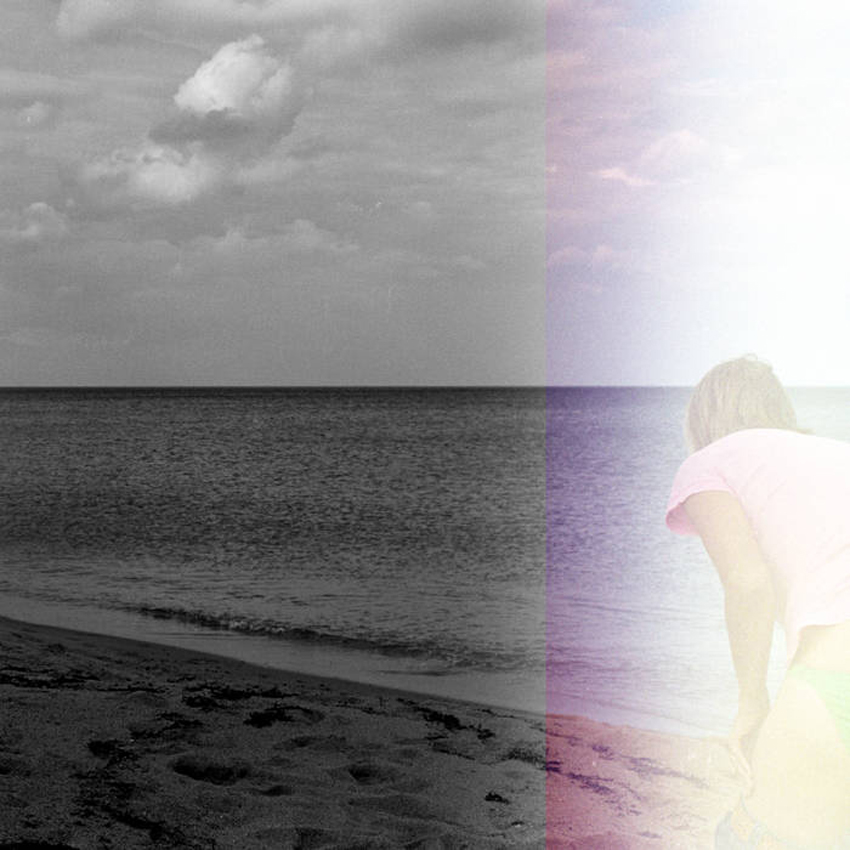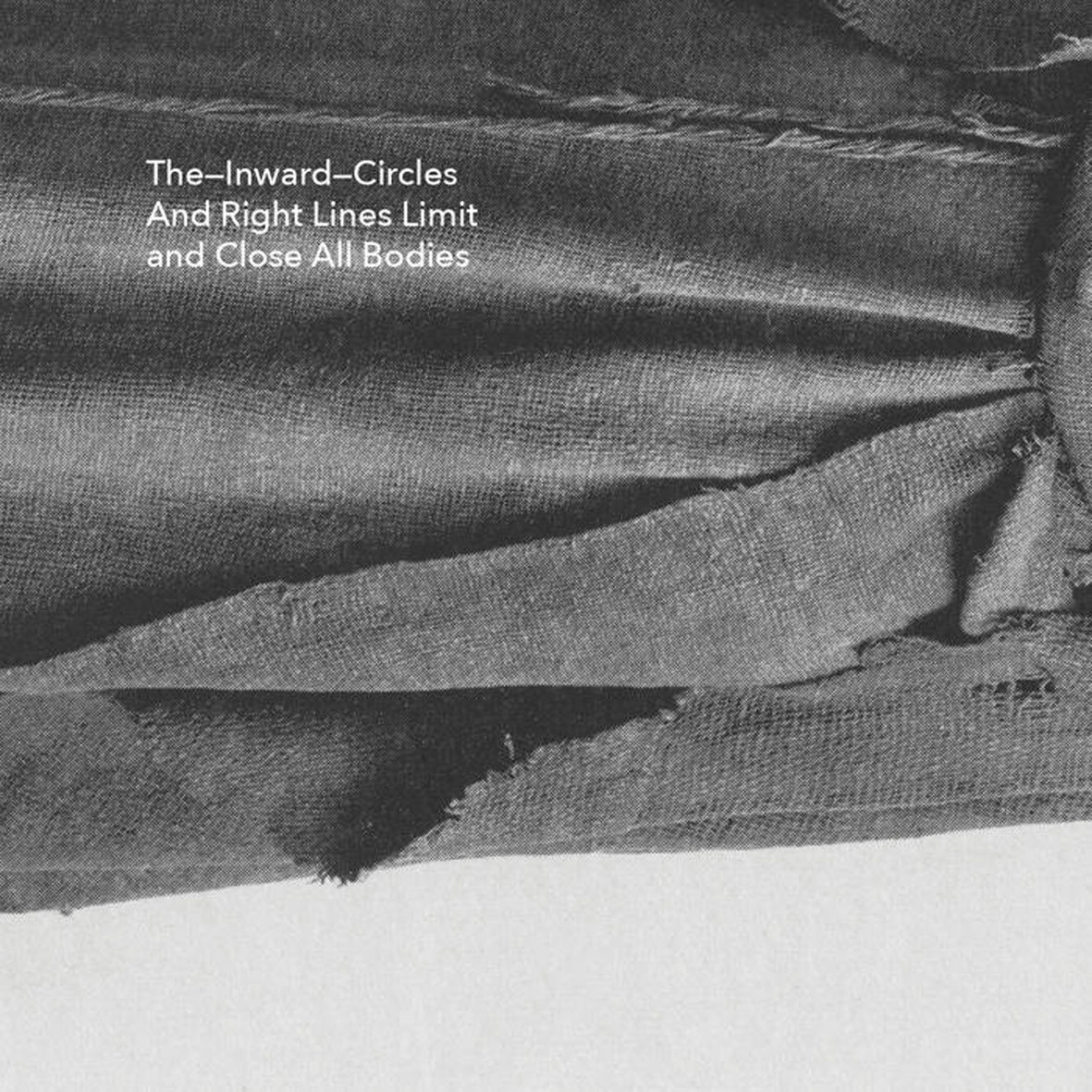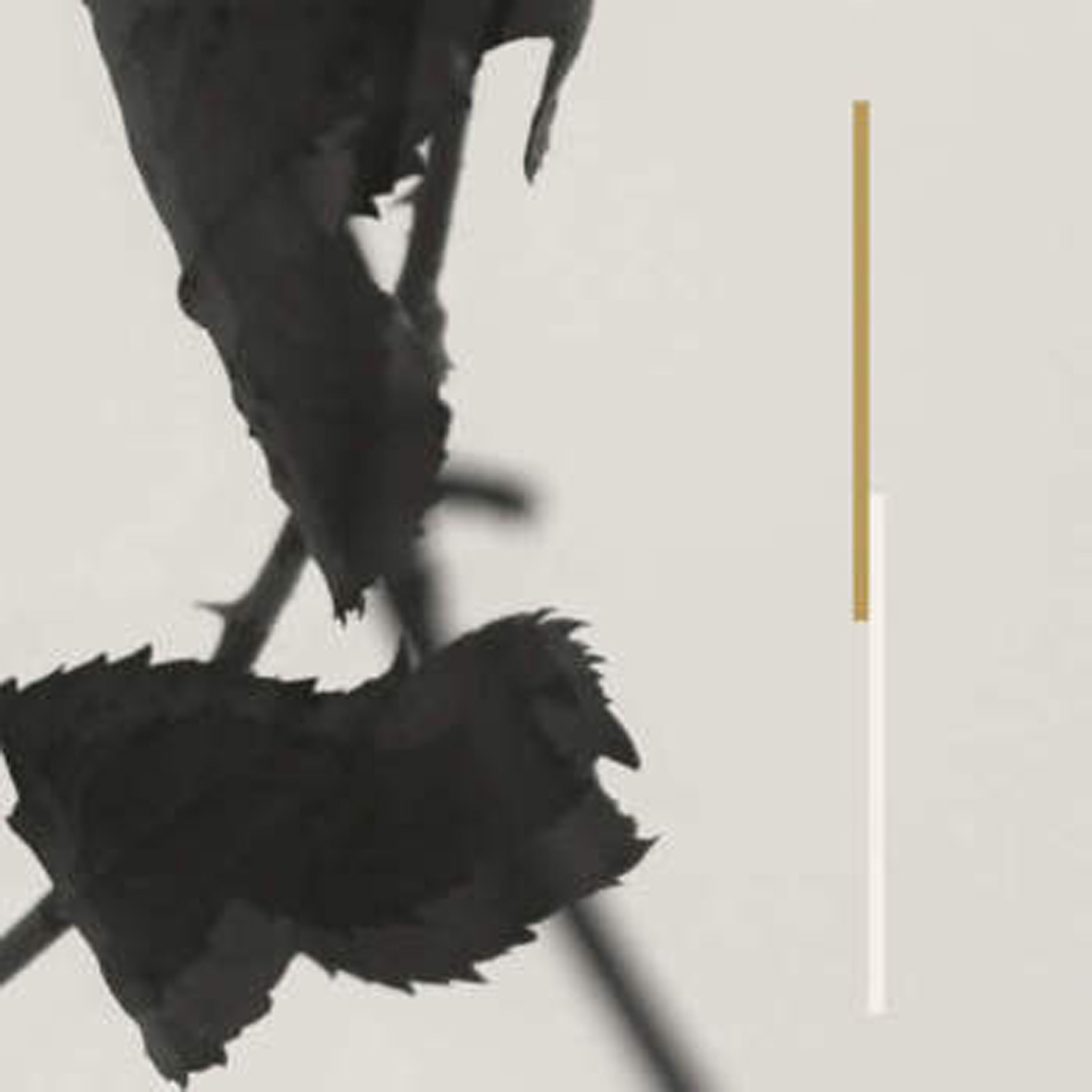 These two new releases from the legendary composer may have come out around the same time, but they both represent extreme ends of his work. The former is a two disc, 16 piece compilation of shorter works created over the span of two years, covering a wide gamut of the López sound. The latter is a flash drive containing a single work (split into 11 distinct parts) five hours and 20 minutes in length, all based on a single sound source. They may be distinctly different in composition and construction, but both are brilliant works in his already shining discography.
These two new releases from the legendary composer may have come out around the same time, but they both represent extreme ends of his work. The former is a two disc, 16 piece compilation of shorter works created over the span of two years, covering a wide gamut of the López sound. The latter is a flash drive containing a single work (split into 11 distinct parts) five hours and 20 minutes in length, all based on a single sound source. They may be distinctly different in composition and construction, but both are brilliant works in his already shining discography.
Hotter than July. This week's episode has plenty of fresh new music by Marie Davidson, Kim Gordon, Mabe Fratti, Guided By Voices, Holy Tongue meets Shackleton, Softcult, Terence Fixmer, Alan Licht, pigbaby, and Eiko Ishibashi, plus some vault goodies from Bombay S Jayashri and Pete Namlook & Richie Hawtin. Solstice moon in West Midlands, UK photo by James. Get involved: subscribe, review, rate, share with your friends, send images! |



 Drøne's second album was bizarrely released as a part of Record Store Day, which was quite an unexpected strategy given that few record stores are clamoring to stock new sound collage albums from Swedish record labels.  As a result, I was kind of expecting A Perfect Blind to be some sort of collectible minor release with eye-catchingly ambitious packaging and swirled gold-flecked vinyl or something.  Instead, it is just another excellent album, though Mark van Hoen and Mike Harding do enlist a murderers' row of talented collaborators including Philip Jeck and Anna von Hausswolff to help realize their expanded vision.  In fact, this album marks quite an impressive and unexpected evolution from the duo’s 2016 debut, using Reversing Into Future's beguiling miasma of shortwave radio transmissions, cryptic snatches of dialog, and droning synths as a foundation for something a bit more substantial and melodic.
Drøne's second album was bizarrely released as a part of Record Store Day, which was quite an unexpected strategy given that few record stores are clamoring to stock new sound collage albums from Swedish record labels.  As a result, I was kind of expecting A Perfect Blind to be some sort of collectible minor release with eye-catchingly ambitious packaging and swirled gold-flecked vinyl or something.  Instead, it is just another excellent album, though Mark van Hoen and Mike Harding do enlist a murderers' row of talented collaborators including Philip Jeck and Anna von Hausswolff to help realize their expanded vision.  In fact, this album marks quite an impressive and unexpected evolution from the duo’s 2016 debut, using Reversing Into Future's beguiling miasma of shortwave radio transmissions, cryptic snatches of dialog, and droning synths as a foundation for something a bit more substantial and melodic. Luke Younger’s latest EP draws inspiration from his fascination with the UK's media chaos surrounding last year’s Brexit vote.  I suppose that is arguably one good thing to come out of that dark bit of recent history, but Helm already seemed to be doing a perfectly fine job producing fine albums without that unfortunate muse.  Inspirations aside, Helm EPs generally tend to feel a hell of a lot like maxi-singles and they only surface when Younger has made a significant creative breakthrough.  World in Action is no exception to that trend.  In this case, that breakthrough takes the form of the 9-minute "Blue Scene," a gloriously skittering and jazz-damaged cacophony that often resembles a hallucinatory flock of worried geese...with a groove.  Naturally, the remaining three pieces adhere to characteristically Helm-esque levels of quality, but it is quite clear that the wildly skwonking, must-hear tour de force of "Blue Scene" is the reason that this release exists.
Luke Younger’s latest EP draws inspiration from his fascination with the UK's media chaos surrounding last year’s Brexit vote.  I suppose that is arguably one good thing to come out of that dark bit of recent history, but Helm already seemed to be doing a perfectly fine job producing fine albums without that unfortunate muse.  Inspirations aside, Helm EPs generally tend to feel a hell of a lot like maxi-singles and they only surface when Younger has made a significant creative breakthrough.  World in Action is no exception to that trend.  In this case, that breakthrough takes the form of the 9-minute "Blue Scene," a gloriously skittering and jazz-damaged cacophony that often resembles a hallucinatory flock of worried geese...with a groove.  Naturally, the remaining three pieces adhere to characteristically Helm-esque levels of quality, but it is quite clear that the wildly skwonking, must-hear tour de force of "Blue Scene" is the reason that this release exists. As a longtime Richard Skelton fan, I have been watching his recent trajectory with quite a bit of fascination, as he has been restlessly diving into increasingly varied and arcane territory while distancing himself further and further from his brilliant earlier work with each new release.  While there are still some lingering vestiges of that vibrantly harmonic-strewn string work in his *AR project with Autumn Richardson, Skelton's solo work as The Inward Circles is explicitly (and increasingly) intent on exploring an aesthetic of "burial, obfuscation and mythologization."  In fact, The Inward Circles often seems like a rather perverse name, as Skelton has seemingly ceased burrowing inwards and thrown himself into the epic, timeless, and vast. At times, that newly cosmic scope falls uncomfortably close to dark ambient (a genre that I am generally quite happy to avoid), but it can sometimes yield absolutely crushing and awe-inspiring results as well (Nimrod is Lost).  This latest opus does not quite sustain the lofty heights of some previous Inward Circles classics, but it compensates with a slow-burning majesty that builds to a sustained and wonderful crescendo.
As a longtime Richard Skelton fan, I have been watching his recent trajectory with quite a bit of fascination, as he has been restlessly diving into increasingly varied and arcane territory while distancing himself further and further from his brilliant earlier work with each new release.  While there are still some lingering vestiges of that vibrantly harmonic-strewn string work in his *AR project with Autumn Richardson, Skelton's solo work as The Inward Circles is explicitly (and increasingly) intent on exploring an aesthetic of "burial, obfuscation and mythologization."  In fact, The Inward Circles often seems like a rather perverse name, as Skelton has seemingly ceased burrowing inwards and thrown himself into the epic, timeless, and vast. At times, that newly cosmic scope falls uncomfortably close to dark ambient (a genre that I am generally quite happy to avoid), but it can sometimes yield absolutely crushing and awe-inspiring results as well (Nimrod is Lost).  This latest opus does not quite sustain the lofty heights of some previous Inward Circles classics, but it compensates with a slow-burning majesty that builds to a sustained and wonderful crescendo. Since releasing two stellar albums in 2012, Aaron Dilloway has been comparatively quiet, contenting himself with a steady stream of cassettes, collaborations, and reissues.  Apparently, he also spent a bit of that time slowly assembling The Gag File, the long-awaited follow-up opus to Modern Jester.  Given that Dilloway has long been one of the most influential figures in the American noise scene, it is no surprise that The Gag File is a bizarre, aberrant, and fine album.  That said, some aspects were still deliciously wrong-headed enough to catch me off-guard (though the cover art should have been a fair warning).  At its best, The Gag File transcends mere noise entirely and ventures into realms that feel like a vivid kitschy nightmare or the infernal horror of an endless bad party.
Since releasing two stellar albums in 2012, Aaron Dilloway has been comparatively quiet, contenting himself with a steady stream of cassettes, collaborations, and reissues.  Apparently, he also spent a bit of that time slowly assembling The Gag File, the long-awaited follow-up opus to Modern Jester.  Given that Dilloway has long been one of the most influential figures in the American noise scene, it is no surprise that The Gag File is a bizarre, aberrant, and fine album.  That said, some aspects were still deliciously wrong-headed enough to catch me off-guard (though the cover art should have been a fair warning).  At its best, The Gag File transcends mere noise entirely and ventures into realms that feel like a vivid kitschy nightmare or the infernal horror of an endless bad party.
 This Montreal-based composer/producer/church organist has been quite hard to miss over the last several years, collaborating on Tim Hecker's Virgins album, releasing a cassette on one of my favorite tape labels (Sacred Phrases), and garnering much critical praise with her 2015 collaboration with LXV (Sirens).  For her latest release, she joins the Boomkat Editions series with this brief one-sided vinyl EP.  I am not normally a fan of gimmicky vinyl formats, but that condensed format works wonders for Coverdale, as her earlier releases were a bit too uneven, fitfully pastoral, and diffuse to fully connect with me (even though they all admittedly featured some occasional flashes of brilliance).  With Grafts, however, she distills all of the best aspects of her work into roughly 20 minutes of lushly melodic and dreamily multilayered sustained beauty.  In fact, in some ways, Grafts feels like an inspired negative image of Virgins, reimagining that nerve-jangling opus as a languorous, sensuously flowing, and gently hallucinatory reverie of hazy drones and rippling pianos.
This Montreal-based composer/producer/church organist has been quite hard to miss over the last several years, collaborating on Tim Hecker's Virgins album, releasing a cassette on one of my favorite tape labels (Sacred Phrases), and garnering much critical praise with her 2015 collaboration with LXV (Sirens).  For her latest release, she joins the Boomkat Editions series with this brief one-sided vinyl EP.  I am not normally a fan of gimmicky vinyl formats, but that condensed format works wonders for Coverdale, as her earlier releases were a bit too uneven, fitfully pastoral, and diffuse to fully connect with me (even though they all admittedly featured some occasional flashes of brilliance).  With Grafts, however, she distills all of the best aspects of her work into roughly 20 minutes of lushly melodic and dreamily multilayered sustained beauty.  In fact, in some ways, Grafts feels like an inspired negative image of Virgins, reimagining that nerve-jangling opus as a languorous, sensuously flowing, and gently hallucinatory reverie of hazy drones and rippling pianos. Given the current social climate across the world, it is not surprising at all that Paul Thomsen Kirk, the Scottish artist (by way of Hiroshima, Japan) has not lightened the mood on his latest work as Akatombo. Short Fuse is a direct follow-up to the 2015 release Sometime, Never, and continues his penchant for memorable rhythms paired with often abrasive electronics and obscure samples, coming together familiar and timeless at the same time his first vinyl release.
Given the current social climate across the world, it is not surprising at all that Paul Thomsen Kirk, the Scottish artist (by way of Hiroshima, Japan) has not lightened the mood on his latest work as Akatombo. Short Fuse is a direct follow-up to the 2015 release Sometime, Never, and continues his penchant for memorable rhythms paired with often abrasive electronics and obscure samples, coming together familiar and timeless at the same time his first vinyl release. I was initially planning to write something like "somehow this wonderfully sublime 2015 release managed to slip by me completely unnoticed," but immediately realized that there was no mystery at all: the only effective way to keep abreast of Andrew Chalk's quietly expanding oeuvre is to actively keep an eye on the Faraway Press website and hope that anything I gamble on is up to Chalk's usual high standards.  While a few of his recent releases have admittedly been a bit too pastoral to fully connect with me, the glistening and gently hallucinatory reverie of this single extended piece for electric piano completely hits the mark.  In some ways it reminds me of William Basinski's eroding tape loops or Steve Roach's classic Structures From Silence album, but not in any sort of direct way.  Rather, A Light At The End of The World just feels like a mesmerizing soundscape of almost liquid textures that I could happily listen to an infinite loop for hours.
I was initially planning to write something like "somehow this wonderfully sublime 2015 release managed to slip by me completely unnoticed," but immediately realized that there was no mystery at all: the only effective way to keep abreast of Andrew Chalk's quietly expanding oeuvre is to actively keep an eye on the Faraway Press website and hope that anything I gamble on is up to Chalk's usual high standards.  While a few of his recent releases have admittedly been a bit too pastoral to fully connect with me, the glistening and gently hallucinatory reverie of this single extended piece for electric piano completely hits the mark.  In some ways it reminds me of William Basinski's eroding tape loops or Steve Roach's classic Structures From Silence album, but not in any sort of direct way.  Rather, A Light At The End of The World just feels like a mesmerizing soundscape of almost liquid textures that I could happily listen to an infinite loop for hours. Félicia Atkinson's radical artistic transformation over the last several years has been quite an interesting one, as each new release seems to distance her further and further from her excellent work as Je Suis Le Petit Chevalier and into much stranger and more challenging territory.  With her last major statement, 2015's A Readymade Ceremony, Atkinson shifted the focus away from music towards a strong emphasis on whispered spoken-word performance of repurposed found texts mingled with George Bataille and her own poetry.  Hand in Hand goes still further in that direction, often reducing the accompanying music to an absolute minimum to focus almost entirely on an eclectic and evocative array of hushed readings from old plant books, magazines, JG Ballard, Philip K. Dick, and her own writings.  The overall effect is often wonderfully surreal and intimate, but Atkinson’s hyper constrained and minimal palette does not offer enough melodicism or dynamic variety to quite carry a full album.  A few of the individual pieces, however, are quite mesmerizing (particularly the closing "No Fear But Anticipation").
Félicia Atkinson's radical artistic transformation over the last several years has been quite an interesting one, as each new release seems to distance her further and further from her excellent work as Je Suis Le Petit Chevalier and into much stranger and more challenging territory.  With her last major statement, 2015's A Readymade Ceremony, Atkinson shifted the focus away from music towards a strong emphasis on whispered spoken-word performance of repurposed found texts mingled with George Bataille and her own poetry.  Hand in Hand goes still further in that direction, often reducing the accompanying music to an absolute minimum to focus almost entirely on an eclectic and evocative array of hushed readings from old plant books, magazines, JG Ballard, Philip K. Dick, and her own writings.  The overall effect is often wonderfully surreal and intimate, but Atkinson’s hyper constrained and minimal palette does not offer enough melodicism or dynamic variety to quite carry a full album.  A few of the individual pieces, however, are quite mesmerizing (particularly the closing "No Fear But Anticipation").
